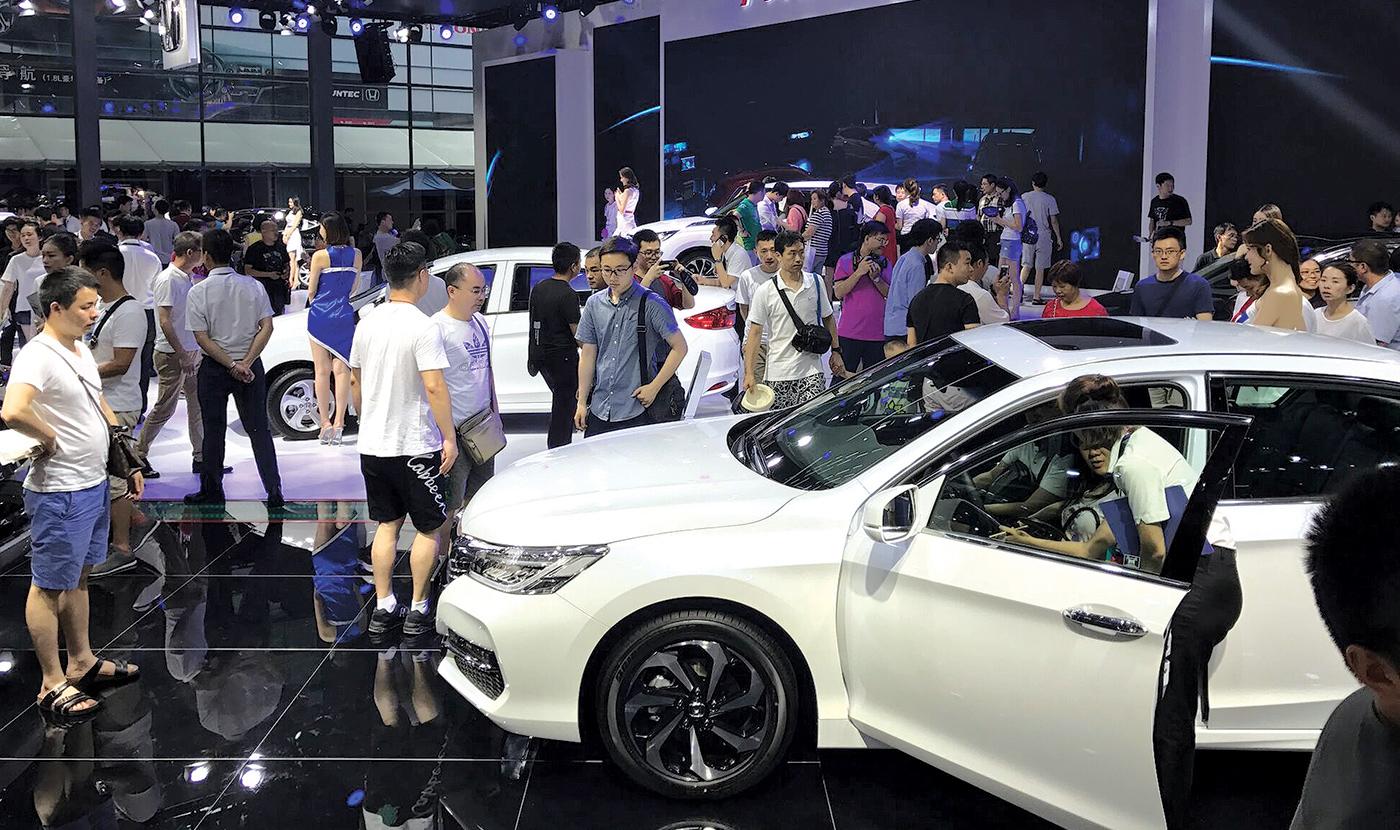
Honda sold 2,619 vehicles over the Shenzhen auto show’s eight-day run in June. Photo credit: HANS GREIMEL
SHENZHEN, China — The throbbing techno music blares at skull-splitting volume. And the crush of pushing through sweaty throngs for a peek at the cars is a full-contact sport.
Some things make Chinese auto shows different from their overseas counterparts.
And when it comes to second-tier shows such as the Shenzhen auto expo, throw in one more big difference: Manufacturers, dealers and customers come to actually buy and sell.
As soon as visitors pass the turnstile, salespeople begin to flock.
At the international shows in Beijing and Shanghai, like in Detroit and New York, the floor is no marketplace. But in Shenzhen — the gateway to China from Hong Kong — and other regional cities in China, it’s possible to leave a show after a few hours with a new car. And plenty of people do.
From the customer’s point of view, it’s a great place to check out all the brands side by side. Plus, those who buy on-site typically get bigger discounts than they would at a dealership.
Stands here have ample office space where salespeople hammer out the deal and sign forms.
From first look to final signature, a deal can be sealed in hours, said one Honda sales manager. That compares with potentially multiple visits over weeks at a traditional store. Honda Motor Co. sold 2,619 vehicles, including 115 Acuras, over the Shenzhen show’s eight-day run that ended June 11.
“We are getting a very special discount today, so we reserved the car,” beamed one Honda customer who, with husband and toddler in tow, bought an Accord. The customer did not want to be named.
New-car buying takes many forms in China. Shoppers use the Internet to make purchases, not just for research as in the U.S. And big, gray-market auto malls are not uncommon in big cities.
One such market in the central metropolis of Wuhan covers several city blocks, with independent dealers packed into tiny alleys and display cars spilling onto sidewalks. They rarely, if ever, get new vehicles straight from the manufacturer and often handle multiple brands.
Domestic marques dominate, some with wild brand names such as Leopaard, Karry or Zotye.
Warranties and aftersale service aren’t even talking points. It’s understood that these are no-strings-attached transactions. But desperate wannabe car owners can pick up a new ride for a deep, deep discount. And for the dealers, it is said, they can make up for the low price by outfitting the cars with cheap, knockoff aftermarket accessories, which quickly add up.
[“Source-autonews”]





